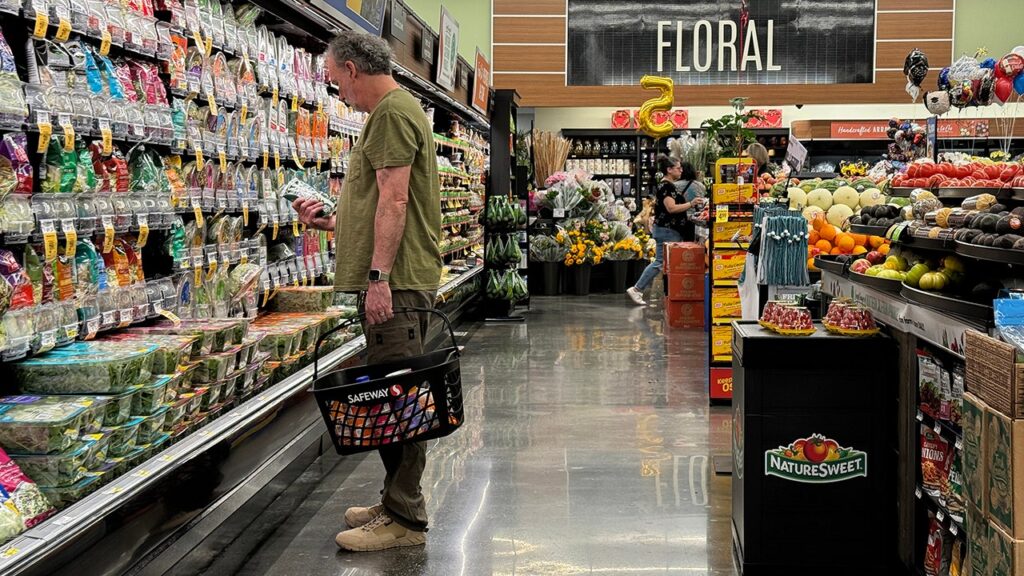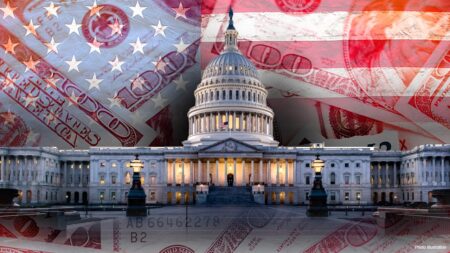Inflation slowed more than expected in May, a welcome sign for the Federal Reserve even as prices remained uncomfortably high for millions of Americans.
The Labor Department said Wednesday that the consumer price index, a broad measure of how much everyday goods like gasoline, groceries and rent cost, was unchanged in May from the previous month. Prices climbed 3.3% from the same time last year. Both of those figures are lower than the 0.1% monthly increase and 3.4% headline gain forecast by LSEG economists.
Another data point that measures underlying inflationary pressures within the economy also moderated last month. So-called core prices, which exclude the more volatile measurements of gasoline and food in order to better assess price growth trends, increased 0.2% in May. From the same time last year, the gauge climbed 3.4% — the lowest reading since 2021.
Altogether, the report indicates that inflation is loosening its stranglehold on the U.S. economy, though prices remain well above the Fed’s 2% target.
The softer-than-expected report comes just hours before the Fed is scheduled to announce its latest interest-rate decision. Investors anticipate that the Fed will hold rates at a 23-year high, although they will be parsing updated economic quarterly projections and Fed Chair Jerome Powell’s post-meeting press conference for clues about where monetary policy is headed this year.
Stock futures surged on Wednesday morning and bond yields tumbled as the report fueled hopes that the central bank could cut interest rates as soon as September.
| Ticker | Security | Last | Change | Change % |
|---|---|---|---|---|
| I:DJI | DOW JONES AVERAGES | 38747.42 | -120.62 | -0.31% |
| I:COMP | NASDAQ COMPOSITE INDEX | 17343.546309 | +151.02 | +0.88% |
| SP500 | S&P 500 | 5375.32 | +14.53 | +0.27% |
High inflation has created severe financial pressures for most U.S. households, which are forced to pay more for everyday necessities like food and rent. Price hikes are particularly devastating for lower-income Americans, because they tend to spend more of their already-stretched paycheck on necessities and therefore have less flexibility to save money.
Housing costs were once again the biggest driver of inflation last month, accounting for more than two-thirds of the total monthly increase, according to the report. Rent costs rose 0.4% for the month and are up 5.3% from the same time last year. Rising rents are concerning because higher housing costs most directly and acutely affect household budgets.
The increase in rent offset a sharp drop in gas prices, which tumbled 3.6% over the course of May – the first decline since January.
Consumers also saw a pick-up in food prices, which have been one of the most visceral reminders of inflation for many households. The cost of food rose 0.1% over the course of the month. Although grocery prices were unchanged in May, the price of food away from home jumped 0.4%.
“One main pain point, food prices, did rise a bit but prices of food at grocery stores held steady,” said Robert Frick, corporate economist at the Navy Federal Credit Union. “There was relief at the pump, but unfortunately, home and apartment costs continue to rise and remain the main cause of inflation. Until those shelter costs begin their long-awaited fall, we won’t see major drops in CPI.”
This is a developing story. Please check back for updates.
Read the full article here











